What if your skin were to turn blue permanently? In this episode of RoyOnRescue, I talk about the possible irreversible side effects of drinking colloidal silver. There’s dangers and side effects that you should be aware of before you decide that silver is the cure.
Category Archives: Preparedness
I Have Throat Ulcers! Now What!?
I received an email from a Rescue Fan that had a severe soar throat and wasn’t sure if she should go to the doctor. I suggested they do, and she was diagnosed with throat ulcers. I thought I’d do a RoyOnRescue to help explain what they are and why you should see a doctor. I hope it helps.
How To Remove A Tick and Prevent Lyme Disease!
In this episode, we boys take a closer look at a situation that hit home when one of Roy’s children may have been bitten by a tick. After consulting the doctor and getting preventative treatment for his daughter, Roy thought it would be a good idea to share his new found information with others. Roy, Dan and Jody get a few laughs and learn a lot about preventing Lyme disease and preventing tick bites. So, if you’ve ever been concerned about ticks and Lyme Disease, you won’t want to miss this 10 minute episode that shows pictures of ticks, what the bite looks like and how to tell if you may be infected by the bacteria that causes Lyme Disease.
Why Is Smog So Dangerous In Los Angeles In the Summer?
A rescue fan wrote in and asked, “Why is smog worse in the summer in Los Angeles?”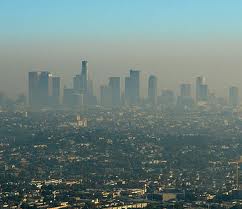
I did a little research and found the following. I hope it helps.
SMOG, nicknamed in the 19th century for the “smoke” and “Fog” found in London due to coal burning fireplaces and furnaces and low hanging fog can be a real problem with increased pollution. One of the reasons smog is so dangerous is due to the fact that many times higher than the safe level of pollution particles hangs in the air like a nebulizer mist. when inhaled, this polution can get into our blood stream and effect our whole body and vital organs. There has been a lot of concern about this especially in China. Over 8000 deaths have been attributed to SMOG in China and I’m sure that long term affects are even worse.
In an article by the “The Daily Green”, it stated that, “ozone needs heat and sunlight to form from its precursor chemicals. That’s why you hear warnings about air pollution most often on hot sunny summer days. But be aware: Ozone persists for hours after forming, so unhealthy conditions often last well into the evening, after the sun has gone down. Also be aware that ozone isn’t the only pollutant out there. Another major cause for concern are fine particulates — dust and soot, but also tiny chemical droplets. Particulates can cause air pollution problems year round, especially since furnaces and wood-burning stoves can produce unhealthy levels in the winter.”(http://www.thedailygreen.com/environmental-news/latest/ozone-air-pollution-smog-0706)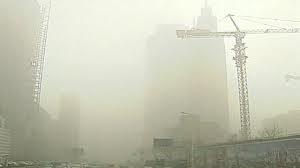
China too has hit an all time high in air pollution and a complication with Smog.(http://www.cnbc.com/id/100456949) It is said that High levels of air pollution in China’s cities leads to 350,000-400,000 premature deaths.(http://news.bbc.co.uk/2/hi/asia-pacific/6265098.stm)
So what can be done if you find yourself “socked in” by a cloud of toxic particulate? Well, depending on the chemicals in the air, we could walk around with particulate filtering masks designed with the appropriate micron filter. But this is not sustainable. It is helpful however, if you find yourself in such a s ituation. It would be wise to view it like any hazardous environment and try to escape as soon as possible. One should be aware that some of these chemicals can enter our bodies via eyes, nose, mouth, food, water and in some cases the skin or breaks in the skin. So, the next time you go outside and can take a deep breath of fresh air and view the nice minty green lichen growing on the north side of your trees, be sure to thank God that you don’t have to deal with terrible conditions of these very polluted locations. Oh, but remember, air moves
ituation. It would be wise to view it like any hazardous environment and try to escape as soon as possible. One should be aware that some of these chemicals can enter our bodies via eyes, nose, mouth, food, water and in some cases the skin or breaks in the skin. So, the next time you go outside and can take a deep breath of fresh air and view the nice minty green lichen growing on the north side of your trees, be sure to thank God that you don’t have to deal with terrible conditions of these very polluted locations. Oh, but remember, air moves 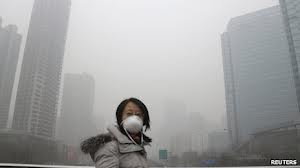 everywhere and it eventually affects us all. So, don’t forget to call your government reps and let them know you’re thinking about them and the anti pollution policies their voting on. Here, and everywhere else too!
everywhere and it eventually affects us all. So, don’t forget to call your government reps and let them know you’re thinking about them and the anti pollution policies their voting on. Here, and everywhere else too!
Here’s a News Video About The China Smog.
What Do I Tell My Friend To Do If They Have An Asthma Attack?
Asthma stinks! But what’s worse is when we have an attack. There’s no better treatment than management to prevent an attack. Avoiding triggers, maintaining regular preventative medications and always having a rescue inhaler available that is not expired and not empty. If a person is having signs of an attack, it’s never a bad idea to call 911 and then begin to treat the symptoms with their medications. If the attack ends, becomes manageable and everything is fine, then the ambulance leaves and there’s no problem. If the attack is persistent and the medications don’t work, one will never regret having called for EMS backup. Remember, you can always send them away, but we can never make up for lost time.
If a person is having trouble with their asthma(wheezes in or out or both, short of breath, tightness, having small attacks, more albuterol use than normal, has congestion or feels like their not able to move as much air(maybe they have a peakflow meter and it’s reading lower than normal) they should call their doctor. Again, if they’re having an attack, call 911. Don’t rely on home remedies and cold air. Hope this helps.
Roy
You Just Got Drain Opener Splashed In Your Eye. Top 5 Things To Do.
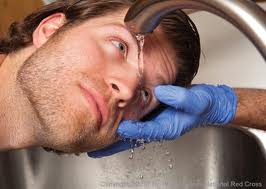 I just received a question from one of our Power Rescue Fans. They asked:
I just received a question from one of our Power Rescue Fans. They asked:
“I just went through a frightening and painful experience at work the other night. I got splashed in my eyes with an acid based cleaner. I know some chemicals that can become more corrosive if water is applied, although that doesn’t go for all of them. What do you do in the case of first aid when you get any type of chemical in your eyes? Is irrigation always the first line treatment? Thanks!”
What a great question. You’re right about the concept that some chemicals could actually cause more damage when water is added. Take the case of phosphorous pentoxide, which can burst into flames upon contact with water, or in the case of other dry alkali chemicals they may actually begin a chemical reaction upon water contact. In most cases “dry” chemicals should be brushed off as best as possible, prior to irrigating with water. When it comes to eyes, the rule of thumb for most chemicals, not the least acid, is flush with sterile or clean water for a minimum of 15 minutes.
Here’s a list of the top five actions to take after you realize there’s an eye emergency:
1. Stay calm and calm the patient with confident words like, I’m Going To Take Good Care of You!
2. Is the scene safe? If not, wait until it is or get personal protective equipment
3. Determine what type of chemical you’re dealing with and read the label for first aid or read the MSDS sheet
4. If the chemical exposure calls for dilution, begin flushing the effected eye(s) with clean or sterile water for at least 15 minutes
5. Tell EMS providers what chemical you’re dealing with, wow much the patient was exposed to, and what treatment has been provided and for how long
The “eye-dia” sorry…is that we manually keep the eyelids open while we flush the eye(s). This should be done in a way that won’t cause cross contamination of the non effected eye. In other words, flush from inside to outside away from the non-affected eye. Activate EMS (911 in the US and 999 in the UK as well as many other countries). The EMS personnel should continue the flushing with sterile water or saline for the duration of the trip to the hospital. Remember, “the solution to pollution is dilution. P.S. Don’t let hysterics get in the way of your treatment. Your patient is going to be scared, blind and really upset. Besides all that…it probably hurts like fire in the eyes, but as rescuers, we have to do what needs to be done and that means holding the eyelids open while flushing.
Keep on Rescuing!
Why Put On Personal Protective Equipment(PPE) Before Checking For Consciousness?
Hello Rescuers!
I just received a question via our ProCPR customer feedback that read: 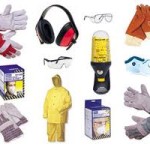
Dear ProCPR, “Question 16 says you have on PPE (personal protective equipment) already, then you check for
responsiveness. Why would you put on your PPE before you check consciousness?
– Anthony
In case anyone else may have asked the same question I though I’d address it. First, Question 16 is the number this person was on while taking the ProCPR.org test. This is the online portion of the Health Care Provider level BLS certification training in case anyone was wondering.
Okay, now for the answer. As professional health care providers, we should always be thinking about cross contamination. We don’t want to catch what the patient may have and we don’t want to give the patient anything that we may have! Remember, PPE works both ways. Can anyone say, nosocomial infection? Even if the patient isn’t in obvious distress or obviously infectious, we should be thinking about the fact that the person seems to be in need and may require medical treatment. This means that we may need gloves, CPR shield with one way barrier, goggles, face mask, respiratory protection etc. This is why it’s so important to think about PPE whenever we encounter a situation that may call us into action. Not just when the person is unconscious or not breathing.
Forever, I’ve battled the problem with health care professionals short cutting PPE while giving care or even thinking about care. We really do need to consider the two way protective properties related to infection control as it relates to appropriate personal protective equipment.
When it comes to layperson rescue, one of the top five reasons that laypeople will not intervene when a person is in distress is the fear of disease! If the rescuer is approaching a victim and dons their gloves early as well as ensures that they have a CPR shield available, the fear of catching a disease is greatly diminished. This will increase the chances that the Good Samaritan may actually get physically involved in the rescue.
Now I know what you may be thinking…”Roy! Do you really think that I’ll have one of those rescue kits on by belt all the time? You may be a “Rescue Hero” type but the feasibility of me having PPE on my person when I’m at the beach, shopping, walking, vacationing, or even at a business meeting is slim to none.” Well, I have to agree! Unless you are a professional rescuer on duty, you probably won’t have your jump kit, glove pouch or a one way valve mask bag swinging from your belt loop. So how will you have the PPE you need at the time you need it? The best way I’ve found is to have a key ring rescue kit. The catch is having it be small enough to not get in the way and large enough to carry your gloves and a one way CPR shield. The reason I say a Key Ring style, is that I think that keys are the one item that most people have with them most of the time. If they don’t have them with them, then they are usually close at hand. And if we have our keys, we’ll at least have gloves and a CPR shield. So make sure you get one and then the PPE problem is out of the way. Still don’t think that PPE is needed? Well, that’s why the AHA endorses “hands only” CPR! It’s really not that compression only CPR is better than full Cardio PULMONARY resuscitation, it’s that there are so many non PPE toting people afraid that they may catch a disease if they do mouth to mouth rescue breaths that we had to design a new form of bystander CPR. Since implementing “Hands only” CPR, there has been an increase in rescuer involvement. And when people get involved and provide CPR, lives are saved!
PPE should be on every rescuer’s mind…and key chain, lay or professional and when we begin to think about PPE as the first step in rescue, lives are saved and infection is prevented more often!
Hope this helps.
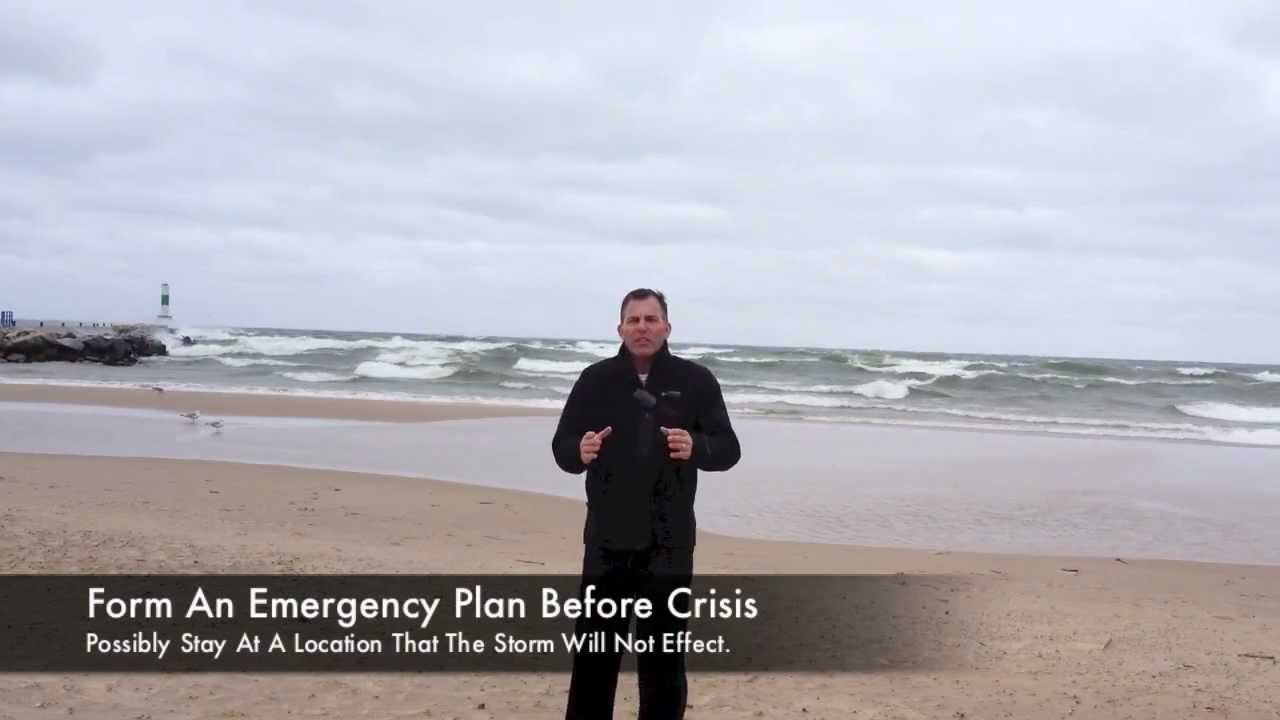
Hurricane Sandy Is In Full Force and Now I Need An Ambulance!
Okay Rescuers,
When natural or unnatural disasters strike, the chance of getting emergency help to your doorstep fast while the EMS services are exhausted is very slim. I wanted to take this opportunity to talk about a situation that doesn’t get discussed much. What effect does a hurricane or natural disaster have on the rest of the community? We sometimes forget the fact that though the rest of the world is distracted by a storm or other disaster related buzz, people still get sick, heart attacks still happen, car accidents still happen but we don’t often think about from where the next ambulance, fire truck or police car is going to be responding. This episode of RoyOnRescue addresses this issue and urges people who may be in high risk of needing an ambulance or other EMS service to think proactively and make arrangements before the emergency happens. Think about moving loved ones with fragile health to temporary locations that may not be effected by the hurricane. Can the person stay with a relative until the community has recovered? What is the back up plan if one can be found? I hope this RoyOnRescue episode get’s everyone thinking and will hopefully help prevent a needless death due to not having the appropriate plans in place. Stay safe, our prayers are with everyone who has been and is effected by hurricane Sandy and other storms.
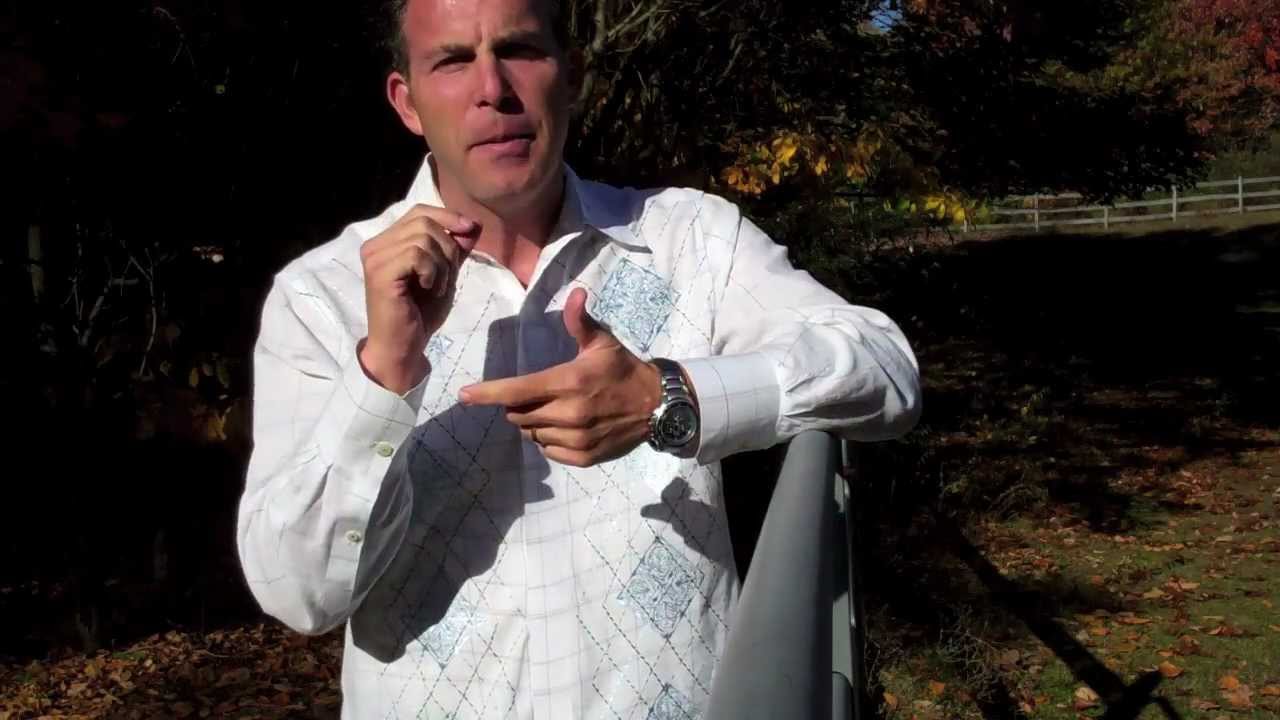
Part 2 How To Survive In The Wild…A Follow Up To Comments
There was such a great response from the last episode covering life threatening emergencies in the wild, Roy decided to record a “Part 2” response that expounds on a couple of the comments.
Are there any medications that may save a heart attack victim’s life in the wild? and, If I’m asthmatic, is there any thing I can do to increase my chances if I’m away from civilization. Be sure to watch this follow up episode to put the pieces together on how to survive in the wild.
So, don’t stop having fun and living life to the fullest, but if you’re going to go out into the wild, make sure you’ve got a game plan for surviving unexpected events.
Staying Safe In the Winter Storm of 2011!
Hello Everyone,
Most of us know what to do to prepare for a bad winter storm, but because we all can use reminders from time to time, I thought I’d post a video blog that just highlights some of the things to think about. From generators to alternative heat sources, driving safety measures to foods that are easy to store, to ways to safely remove snow from our roofs, this video blog tries to highlight some important things to remember while weathering a winter storm.
Hope it helps in time.
Best Wishes,
Roy, RoyOnRescue.com


